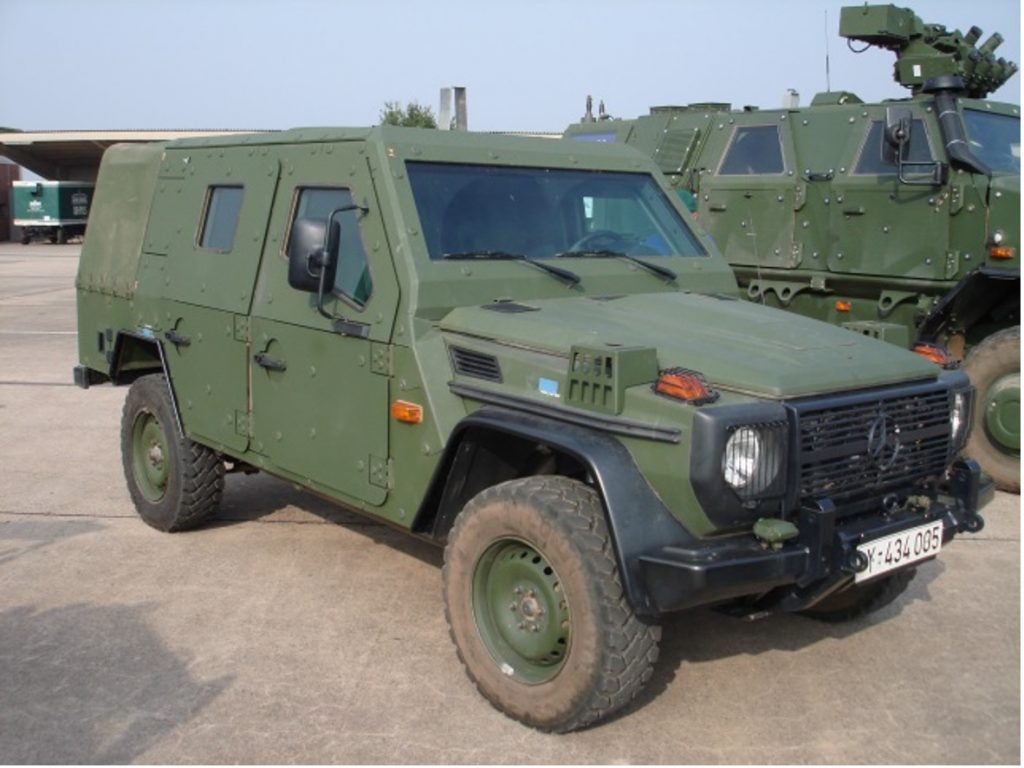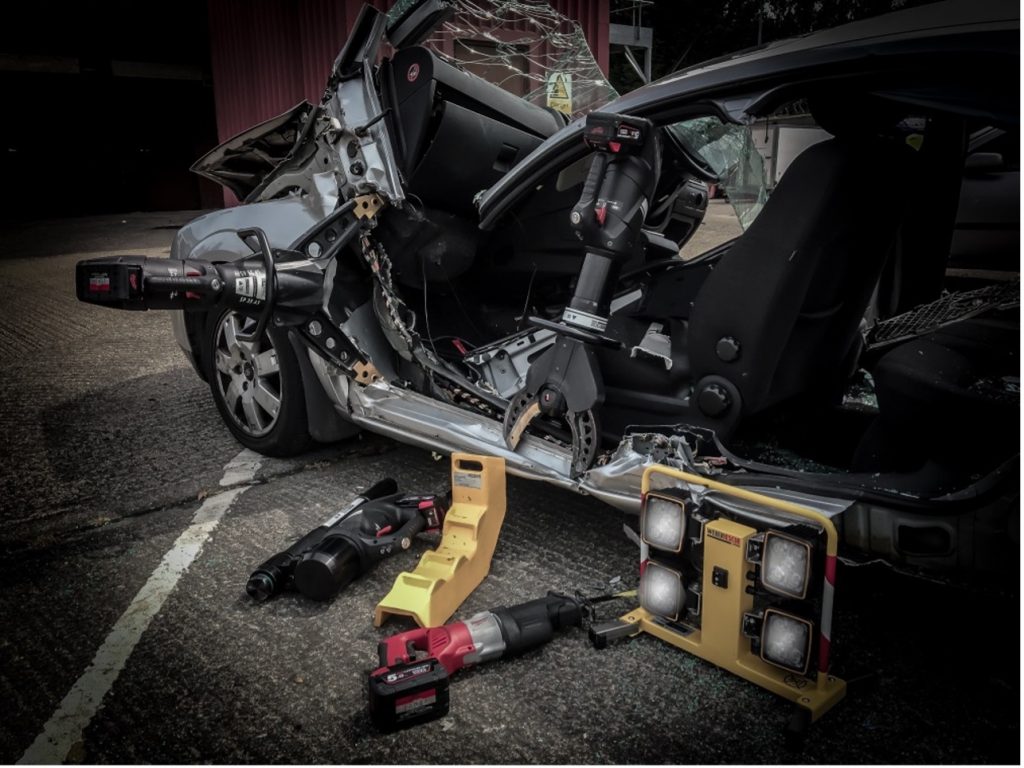What would you do if your team was looking after a client or were working in a remote location and there was a serious road accident?
Would you be able to get them out if they were physically trapped? Would you be able to rescue your clients or your team mates and save their lives? Or would you just hope that the local emergency services will be informed, close by, sufficiently trained and carry the necessary equipment to save you?
For many years good friends of ours in the close protection and military sectors have said to us that what is really needed whilst transporting their clients and personnel is the ability to carry out an emergency rescue immediately following a vehicle incident whether it is accidental or a deliberate attack on their vehicles, some of which, may be armored presenting even further rescue difficulties.
Consider your team travelling in a vehicle to a location that is remote or has limited local rescue capability compared to the UK. A vehicle accident or attack occurs, consider then if within that team or a following vehicle – there is the capability to proactively react and carry out effective rescue operations and medical interventions. With the right training and equipment you can literally have a UK FRS capability in the boot of your vehicle or support vehicle. That goes some way towards what we aim to achieve for clients, organisations and other services where a clear benefit and need is identified.
If you are carrying your own rescue and medical provision with you then wherever you are or whatever the circumstances you have a fighting chance of saving your own lives and that of those you are sworn to protect.
Even in major European cities it can take as long as 15-20 minutes for an emergency response to arrive at the scene of an accident from the time of call and in rural areas much longer. Having an onboard rescue capability could literally mean the difference between life and death. After all if you can’t access and extricate the patient then you can’t administer effective medical care.
It is true that modern vehicles are stronger and safer than vehicles of years gone by but the flip side to this is that when these vehicles are involved in severe collisions, or even attacks, then it is much more difficult to release any trapped casualties within the vehicle due to the strength of modern materials such as Boron steel. Our team has many years of vehicle rescue experience and have witnessed numerous first-hand incidents where the only way to release occupants is with the use of specialist hydraulic rescue equipment.
Having a Haligan (hooligan) tool, crowbar and a hammer is certainly not sufficient to carry out rescues from modern vehicles!
Security and Close Protection teams are responsible for ensuring safety of their clients and as a result should be prepared for all eventualities. Clients of protection teams will also ‘certainly’ be reassured that your teams carry rescue tools and are effectively trained to use them during an emergency therefore providing a further reason why your services should be employed to protect them, their families and their clients.
Why hasn’t this approach been taken before?
For many years it was only possible to have a sufficient rescue capability if you had a large hydraulic generator, hydraulic hoses and large heavy rescue tools. This meant that it was not realistically possible to provide a portable rescue solution.
However, advancements in hydraulic tool design and the advances in battery technology now mean that it is possible to produce tools capable of in excess of 50 tonnes of cutting and spreading forces that can now be combined into smaller and lighter tools without the need for generators or hoses. As a result it is now possible to have a state of the art rescue capability in your car which will allow you to have an immediate rescue intervention on the scene of any accident or incident.
There is now a wide range of small powerful rescue tools which will permit rescue operations and greatly increase survivability rates by allowing rapid extrication of injured casualties whatever your location. These tools and associated training will be particularly useful to the following sectors:
- Security & Close Protection teams
- Corporate Risk Management
- Military units & Special Forces
- Counter Terrorism teams
- Emergency Responders
- Organisations working in remote locations
However, in relation to using these tools it is vitally important that they are used in the correct manner and that personnel are familiar with the wide multitude of techniques employed during rescue operations. Failure to do so could result in damage to the tools or even worse – Injury to the users!
It must also be considered that these lightweight and powerful tools also have many other potential uses rather than just vehicle rescue and can be utilised in a wide variety of circumstances for military, counter terrorism and special forces teams.
Medical vs Physical rescue
The way to view rescue provision is to consider this; it has an equal weighting in relation to the problem. This means that ideally the methodology is fifty percent technical/physical rescue and fifty percent medical rescue. These two ideally work harmoniously with each other, to simply save life in the context of a vehicle accident. Of course, additional dynamics like the severity of the incident, geographical location and time of day are all factors that can affect the problem. It must be borne in mind however, even with the odds stacked against you having a technical rescue capability and a medical capability is not to be underestimated.
There are many examples where this technical/medical capability has not existed, and life has been lost. We can’t undo what is done, but we can adapt, prepare and be ready to react and respond better next time. Why wait for tragedy if you can play a part in reducing it.
The medical aspects are vital. Consider travelling in areas or locations where medical response is poor, non-existent, ill equipped or just too far away from where an incident has occurred. Simply the option to dial the emergency services and know a response will attend is not an option in many places around the world. A solution needs to be self-sufficient, skilled, equipped and able to help yourselves or your team/colleagues.
Our methodology is borne out of military experience, humanitarian experience, professional rescue experience and exposure gained from operational functionality over a prolonged period. This methodology works, it gets results it can make a difference meaning it can save life.
Our approaches to trauma and injury are evidence based, proven and honed even from extreme environments like on the battlefield. They are taught in an assertive and disciplined sense to deal with problems in order of severity, often from lessons learned in those extreme environments. If it works in those environments, often hours away from definitive care then it can work anywhere.
It is certainly clear to us that when it comes to trauma care then the military are the world leaders and when it comes to vehicle rescue then Fire and Rescue services are the experts. So this is why we have brought together the best and most experienced instructors in both fields to help and educate others to help preserve life.
We hope that you have found this article thought provoking and if you would like to know more we would be happy to hear from you and answer any questions you may have. Please visit our website at – “IRRTC.co.uk” to find all our full contact details and further information and services available.
Are you a cut above your competition?
By Neil Pedersen
Over the past 28 years Neil has been a fully operational member of the British Fire Service specialising in Training and Development and Overseas project design which has allowed him to assist colleagues in various aspects of Fire service operations both here in the UK and also numerous countries around the world.
He has both a varied and also extensive experience in the emergency service sector and in particular practical applications for dealing with operational and emergency service recommendations up to and including Strategic level reviews.



Leave a Reply